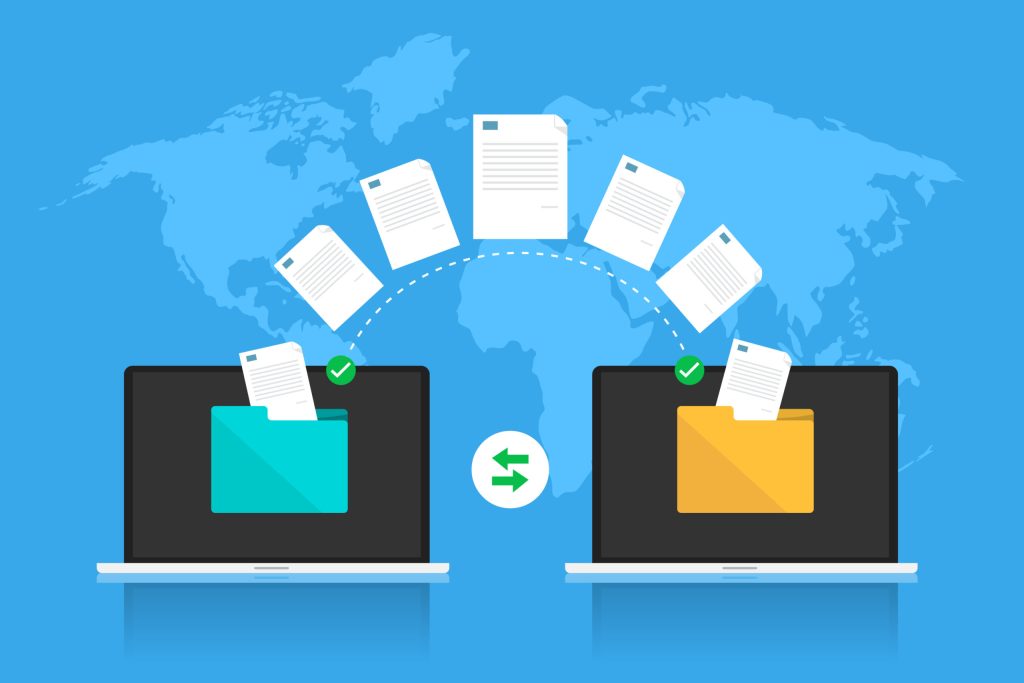Whether you’re sending a single ad-hoc email attachment or exchanging thousands of business-critical files each day, file transfer is a cornerstone of enterprise data transmission. But with cybercrime on the rise, selecting a secure file transfer solution that can handle your needs is more important than ever.
File transfer refers to the movement of computer files from one system to another. It can occur inside or outside the enterprise and is governed by a communications protocol. Common examples include file transfer protocol (FTP), transmission control protocol (TCP) and hypertext transfer protocol (HTTP).
Before the Internet, transferring large files was a challenge. If you had a paper copy of a file you needed to send to someone, your options were to manually bring it to them or send it through the mail. If you wanted to be more efficient, you could use a same-day messenger service or send it by fax. But these methods weren’t reliable and often left sensitive information in the hands of people who may not have the best security practices or a clear chain of custody.
Now, with the advent of cloud computing and managed file transfer (MFT) solutions, there are new and more reliable ways to move large files securely. Many of the largest enterprises, especially those that are heavily regulated, have been using Electronic Data Interchange (EDI) for years to move large files across the globe. But these solutions can be expensive and difficult to set up, requiring extensive IT resources.
In addition, these solutions are not as scalable as they need to be. Email, which is still commonly used for file transfers, is not reliable and can easily lose information in the hands of unintended recipients. Plus, most email systems have size limits on their attachments, making it impossible to send large files. Email is also not a secure way to exchange sensitive information as it does not offer encryption or return receipts, which can help ensure your data arrives safely in the hands of its intended recipient.
Another option is to use a file transfer standard that offers robust authentication and granular access controls. This will ensure only authorized personnel are able to access sensitive information, protecting your organization from potential security breaches and compliance violations. It’s also important to consider where your data is stored and how it will be backed up in the event of a system failure or disaster.
For these reasons, most organizations opt to use a managed file transfer service that provides advanced features like automation and integration capabilities. The right MFT solution will support a wide range of protocols and standards, including FTP, FTPS, SFTP and FTPS. The right MFT solution will also have a robust backup and recovery system to minimize the risk of data loss and enable fast restoration of your files. It will also provide options for customization through application programming interfaces (APIs). These will allow you to automate certain file transfer processes and integrate with your other applications.Upload files


